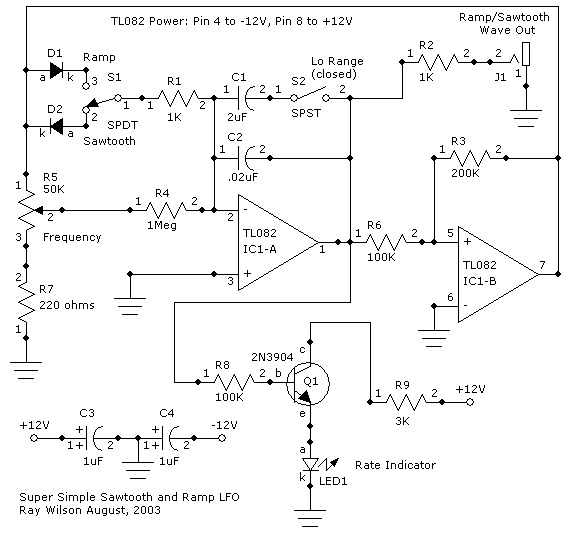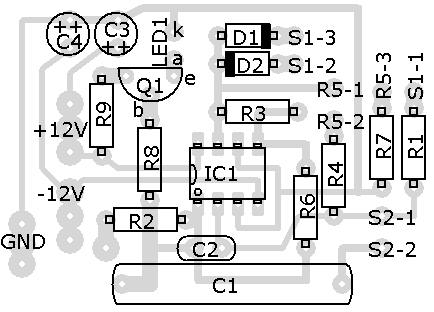Ray Wilson authored this content while he was actively running MFOS as the founder and resident genius.
We retain the content because it reflects a valuable point of view representing that time and place.
Article by Ray Wilson
This is an intermediate to advanced project and I do not recommend it as a first project if you are just getting started in synths or electronics. Only the circuit and some explanation are shown here. A lot of project building, troubleshooting and electronics experience is assumed. Additionally, electronic equipment ownership (scope, meters, etc.) is taken for granted. If you are interested in building this project please read the entire page before ordering PC boards to ensure that the information provided is thorough enough for you to complete the project successfully.
Introduction
I am finding that the ambient electronic music I am creating is requiring lots of LFOs. Here is a really simple yet very useful Ramp and Sawtooth LFO. In low range this thing will take minutes to cycle when turned all the way down.Circuit Description
IC1-A is an integrator the input of which comes from IC1-B's output. IC1-B is wired as a comparator with lots of hysteresis. When switch S1 is set to Ramp and IC1-B's output is low (-12V) current flows out of R4 toward the output of IC1-B. IC1-A's output ramps up so that a matching current flows through the capacitor(s) in its feedback path toward it's inverting input. This is because the main job of an op-amp (wired in this manner) is to keep its inverting and non-inverting inputs at the same voltage level (in this case ground since IC1-A pin 3 is at ground). Once IC1-A's output voltage climbs high enough to cause a slightly higher voltage to appear on pin 5 of IC1-B than pin 6 IC1-B's output snaps high. A ton of current (really only a few milliamps) flies through D1 and R1 into pin 2 of IC1-A and its output ramps rapidly (~50uS) down which causes IC1-B's output to go low again and the cycle repeats. Pot R5 controls how much of the voltage from the output of IC1-B is available to source or sink current from IC1-B's inverting input. The more capacitance in IC1-A's feedback path the slower the output needs to ramp to provide a constant current flow toward (or away from) it's inverting input. When S1 is in the Sawtooth position the circuit functions as previously described except that the rush of current occurs when IC1-B goes low instead of when it goes high (as previously explained). Thus IC1-A's output will go high quickly but take its time going low.
Ramp and Sawtooth LFO

Ramp and Sawtooth LFO PCB Layout (Component Side View)

Ramp and Sawtooth LFO Parts Placement
